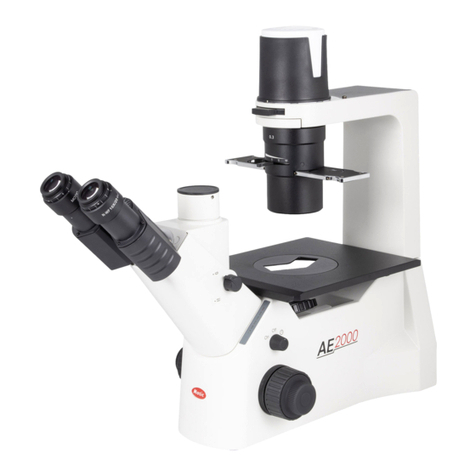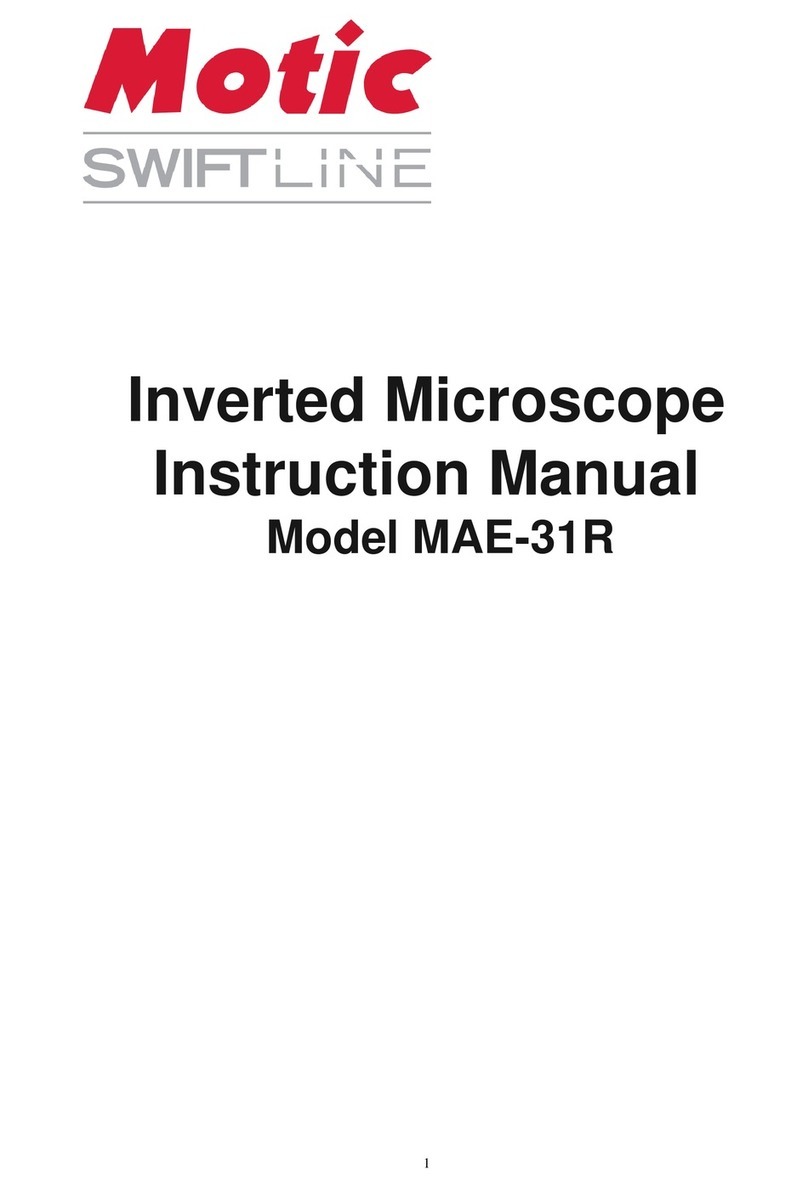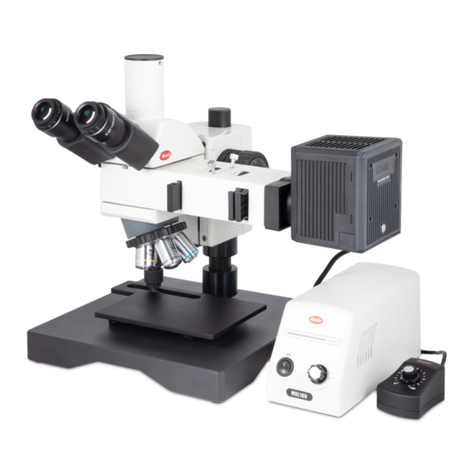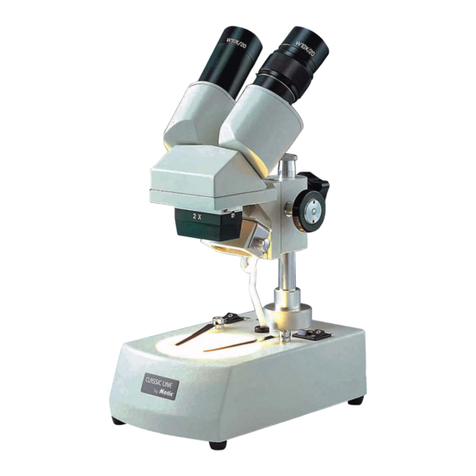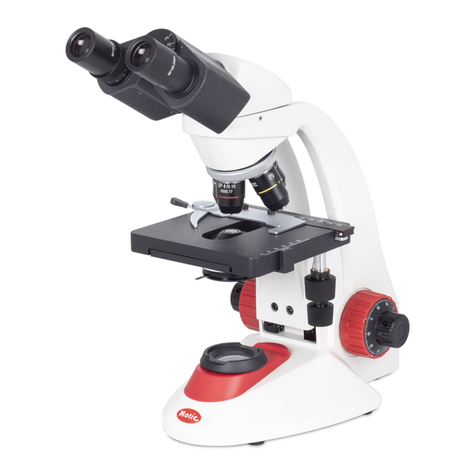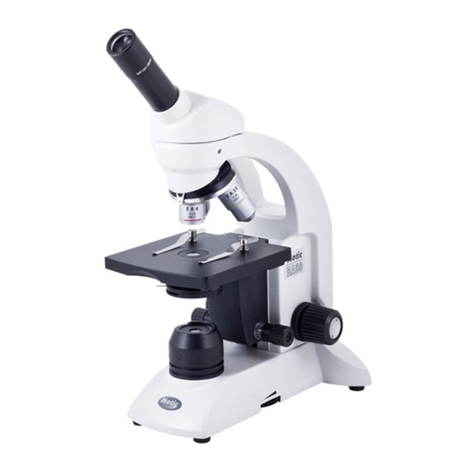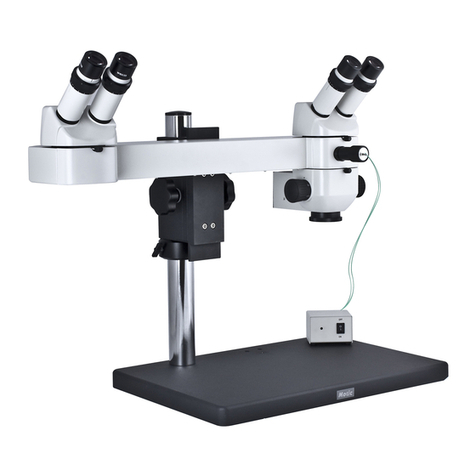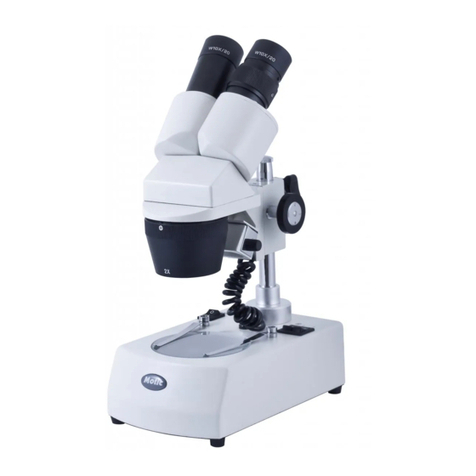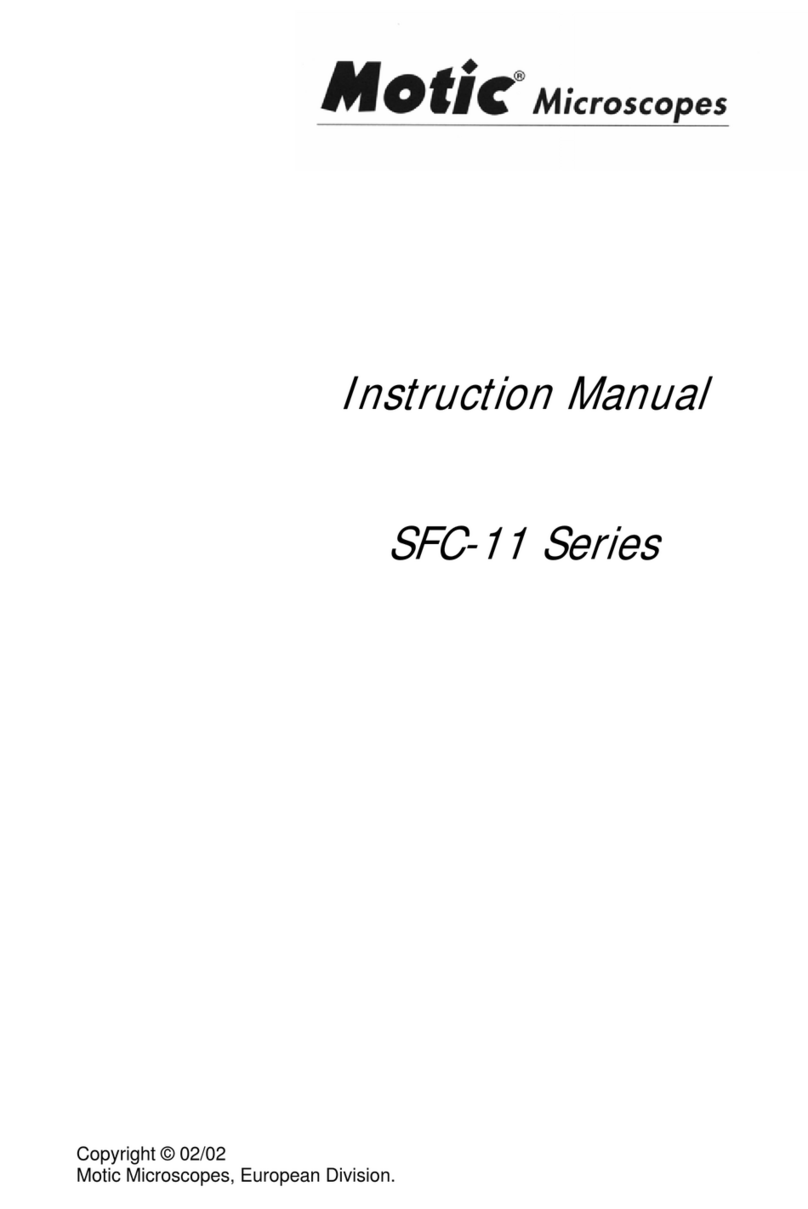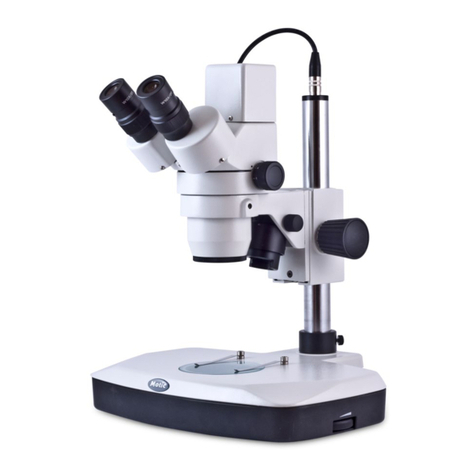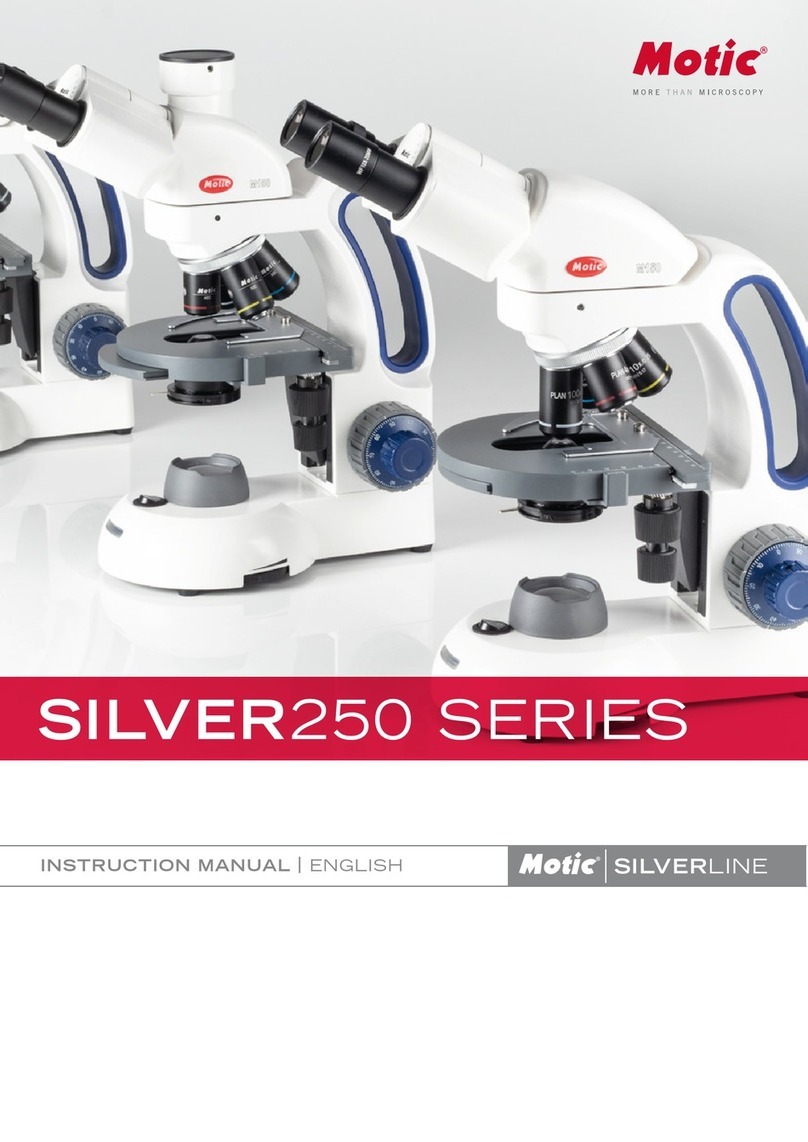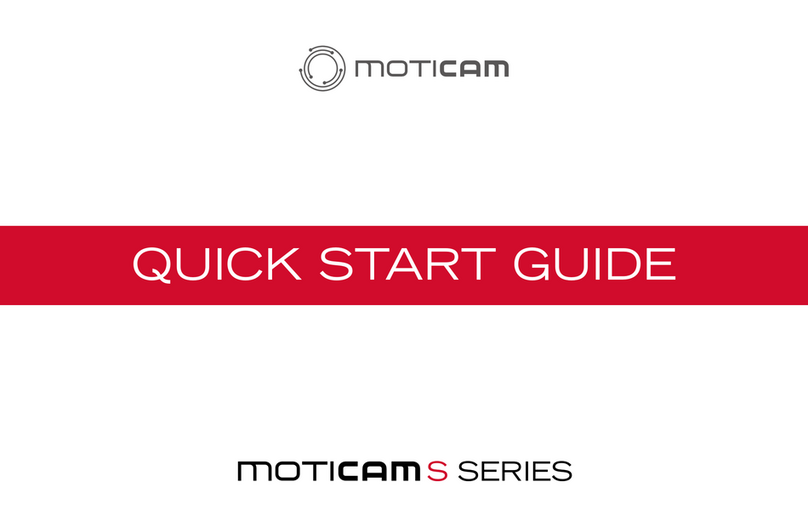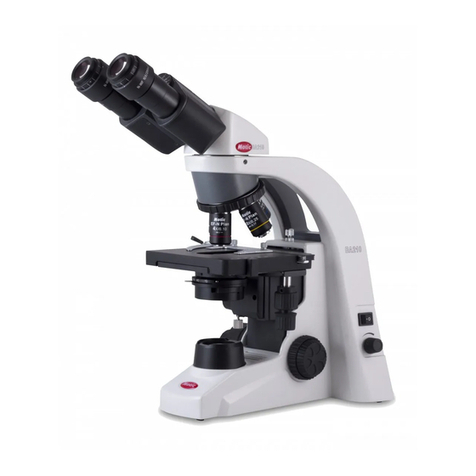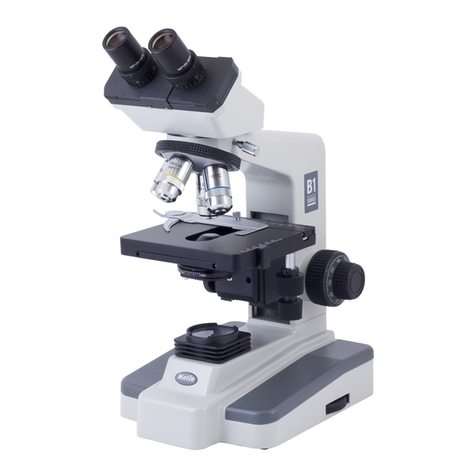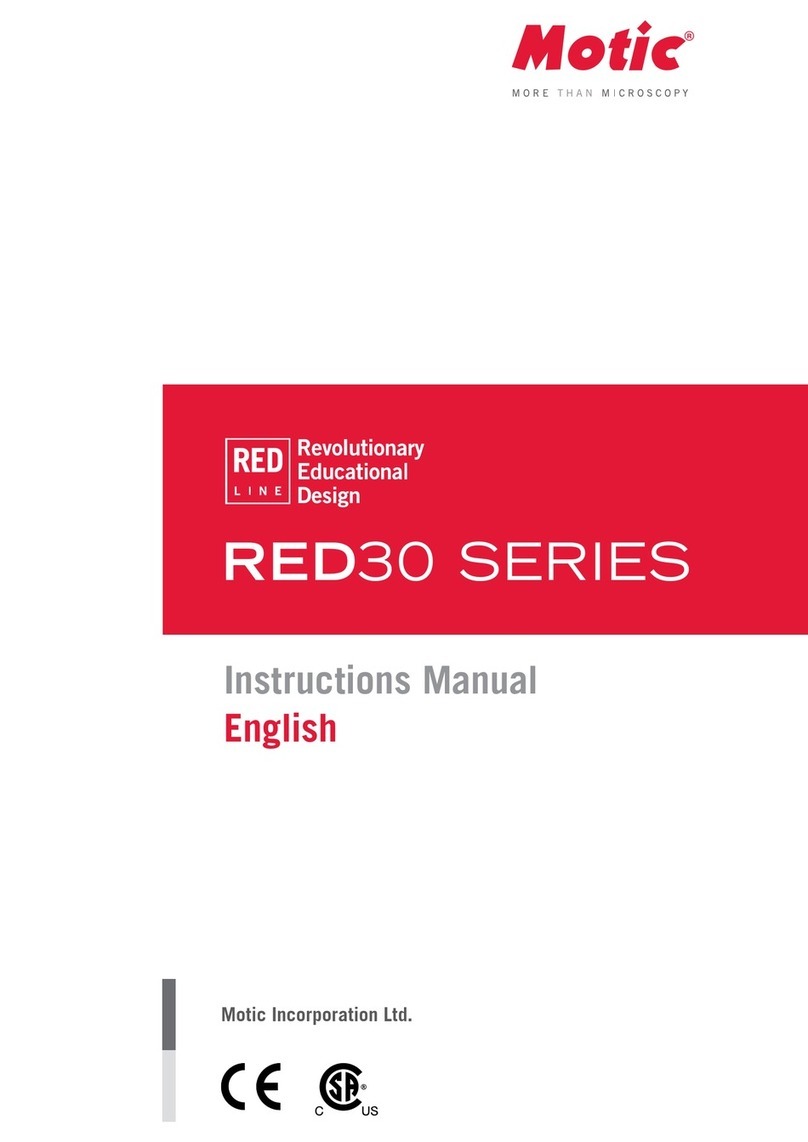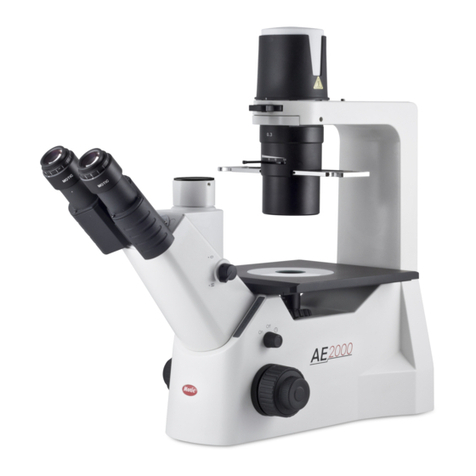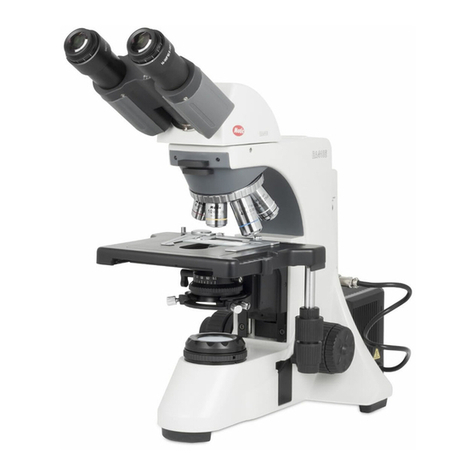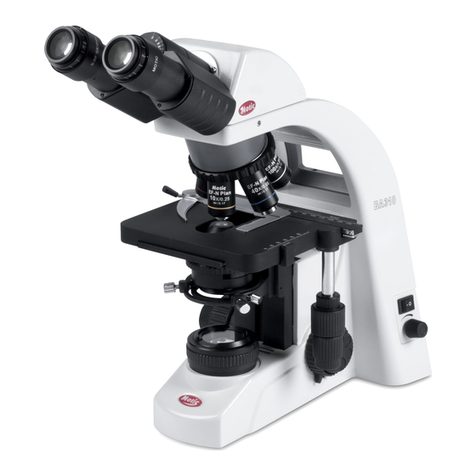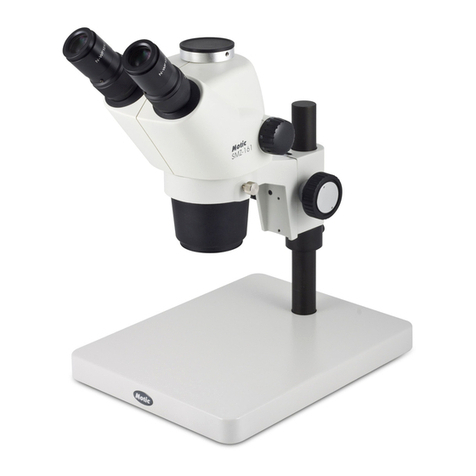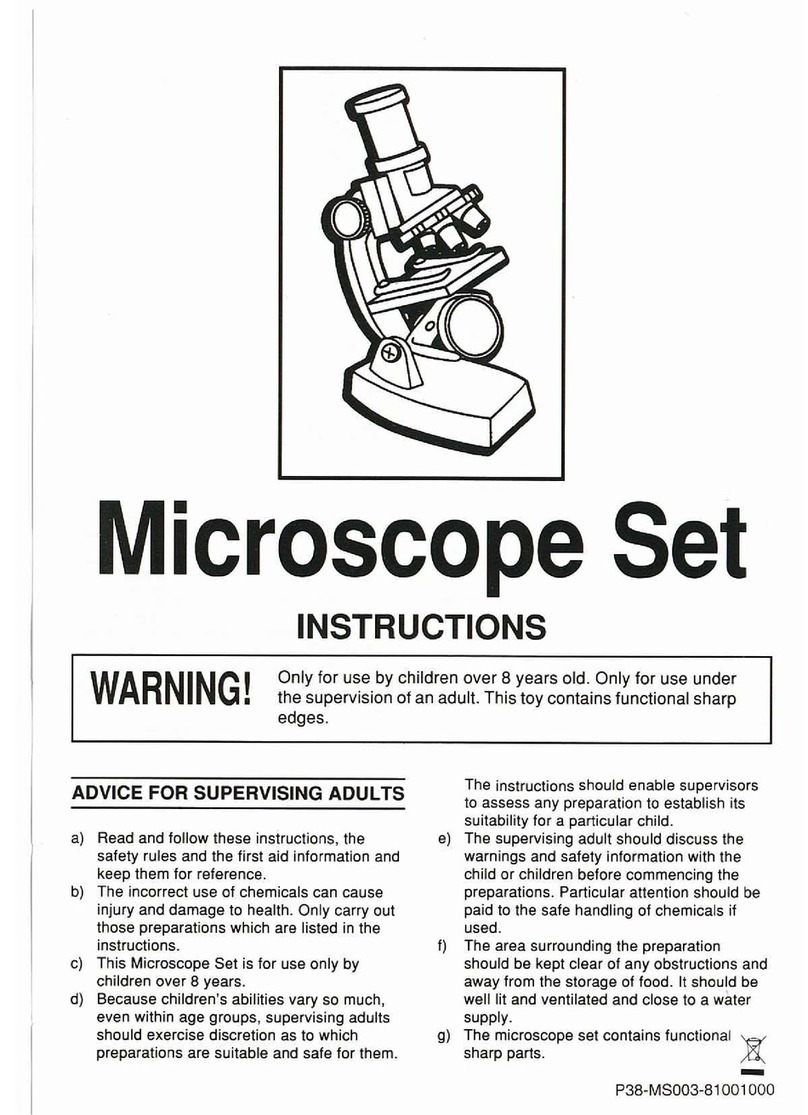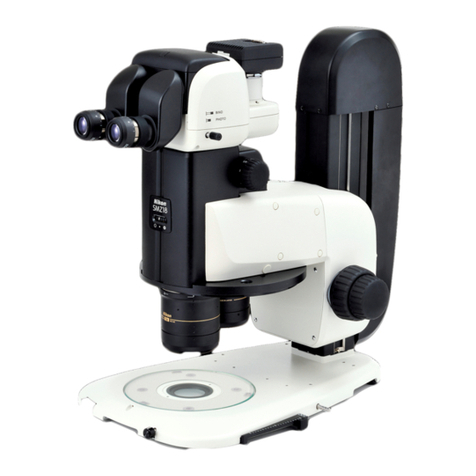1. ILLUMINATION
A. The microscope is furnished with two stage plates. The frosted glass plate is used when viewing
transparent specimen slides or for viewing some specimen thin enough through which light can pass
(insect wings, etc.) The plastic black/white contrast plate can be used when viewing opaque objects or
for dissecting. Choose side of plate providing best contrast with specimen.
To change plates, remove black/white stage plate by putting finger in relief and press edge of stage
plate to the front of base and remove plate. Install frosted glass stage plate by inserting into opening
and pressing forward and down into base.
B. There are two rocker type light controls located on the rear top surface of microscope base.
“I” = Turns incidental light ON and OFF (top illumination)
“II” = Turns transmitted light ON and OFF (substage illumination)
C. Light intensity control located on side of base. This control varies the light intensity of either the
transmitted or incidental LED illuminators.
D. Select and push appropriate rocker switch to ON position to turn desired incidental or transmitted
illuminators on.
E. Adjust brightness of LED illuminator with intensity control knob located on side of microscope, rotating
control varies intensity of both transmitted and incidental illuminators.
2. INTERPUPILLARY ADJUSTMENT
This permits each user to adjust spacing between eyepieces in order to accommodate distance between
their eyes. While looking through the microscope eyepieces with both eyes grasp eyepiece tube housings
with both hands and rotate them on their axis, moving eyepieces apart or together until a full field of view is
observed and images blend into one. Interpupillary distance is now corrected for your own inter-ocular
distance and does not require further adjustment later unless another user changes this adjustment.
3. FOCUSING
A. Adjust zoom control knobs (located on both sides of head) so that the lowest magnification number “1”
is positioned at the black index dot on head. Lower magnifications have larger fields of view, making it
easier to position and locate area to be viewed.
B. Place a flat object or specimen slide (cover glass up), on stage plate.
C. Position focusing knobs in the center of focusing range.
D. On post mounted models, the height of viewing head can be adjusted up or down on the post in order
to focus on difference sized objects. Loosen the locking knob located on the locking support collar,
allowing the support collar to slide down to bottom of post. While firmly holding viewing head with one
hand, loosen locking knob located on back of focusing assembly so that head can move freely up or
down on post.
While looking through microscope, move viewing head up or down on post until object can be seen in
approximate focus. Tighten focusing assembly locking knob. Position the support collar under the
focusing block and tighten locking knob on support collar. It is not necessary to make this adjustment
every time you change objects to be viewed, so long as the different objects are of similar thickness or
height.
E. Both eyepieces have knurled diopter adjustment rings. Rotate both left and right diopters in a
clockwise direction to the lowest position.
